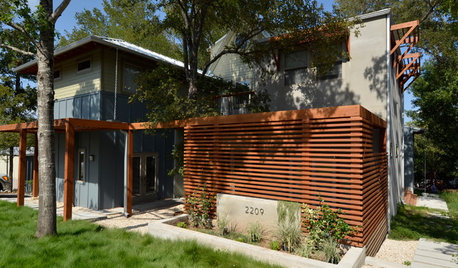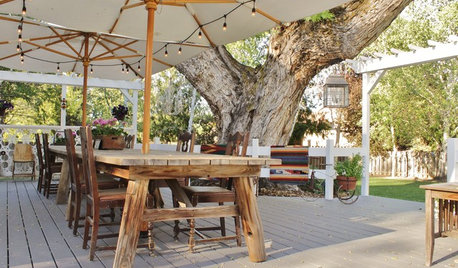Questions on transplantability
mrsgalihad
11 years ago
Related Stories

EXTERIORSCurb Appeal Feeling a Little Off? Some Questions to Consider
Color, scale, proportion, trim ... 14 things to think about if your exterior is bugging you
Full Story
TASTEMAKERS5 Questions From ICFF: Lindsey Adelman
The inventive designer takes a break from New York's International Contemporary Furniture Fair to talk about her artistic lighting fixtures
Full Story
HOUZZ TOURSHouzz Tour: Visit a Forward Thinking Family Complex
Four planned structures on a double lot smartly make room for the whole family or future renters
Full Story
FALL GARDENINGMake This Fall’s Garden the Best Ever
Learn the most important tip for preventing buyer’s remorse, plus get more valuable buying and planting advice
Full Story
TRANSITIONAL HOMESHouzz Tour: A Happy-Trails Home on a California Field
Horse-loving homeowners look to barns and equestrian references for their light and bright new build
Full Story
GARDENING GUIDESGardening Solutions for Dry, Sandy Soils
Has your desert or beachy site withered your gardening creativity? Try these ideas for a beautiful, easy-care landscape
Full Story
TRANSITIONAL HOMESHouzz Tour: New Homeowners Find Their Style
Homework assignments help reveal a couple’s tastes and lead to a home filled with textures and organic tones
Full Story
HOUZZ TOURSMy Houzz: A 1908 Farmhouse That Loves to Entertain
Charmingly refurbished pieces fill a Washington couple’s idyllic home and sprawling landscape
Full Story
EDIBLE GARDENSSummer Crops: How to Grow Tomatoes
Plant tomato seedlings in spring for one of the best tastes of summer, fresh from your backyard
Full Story






thinman
Annie
Related Professionals
Sand Springs Landscape Architects & Landscape Designers · El Reno Landscape Contractors · Mercedes Landscape Contractors · Post Falls Landscape Contractors · Shaker Heights Landscape Contractors · Tamarac Landscape Contractors · Vermilion Landscape Contractors · Crowley Landscape Contractors · Hicksville Roofing & Gutters · Miami Beach Roofing & Gutters · Baltimore Siding & Exteriors · Euless Siding & Exteriors · Oak Forest Siding & Exteriors · Orange County Siding & Exteriors · Yorkville Siding & Exteriorsluckygal
mrsgalihadOriginal Author
ianna